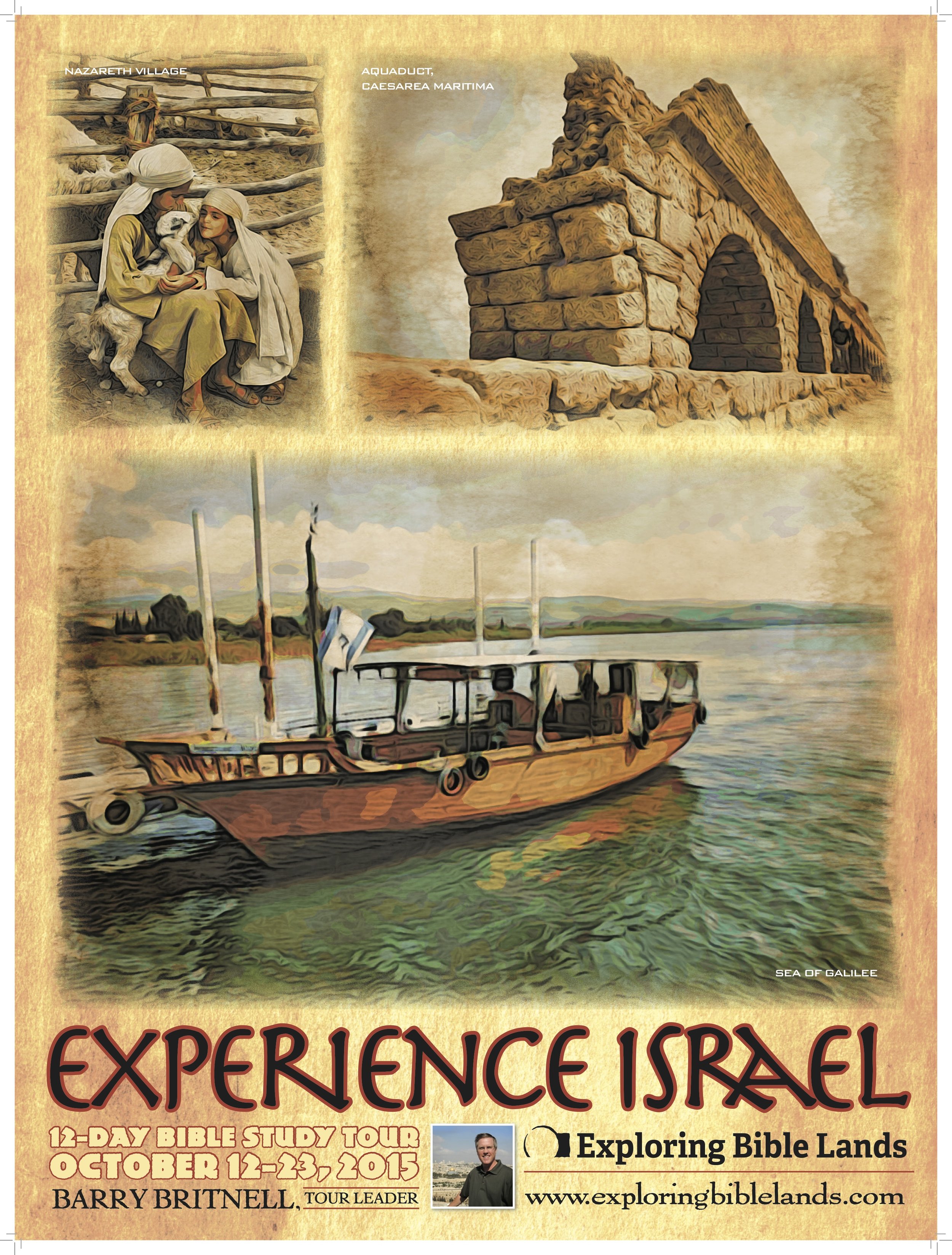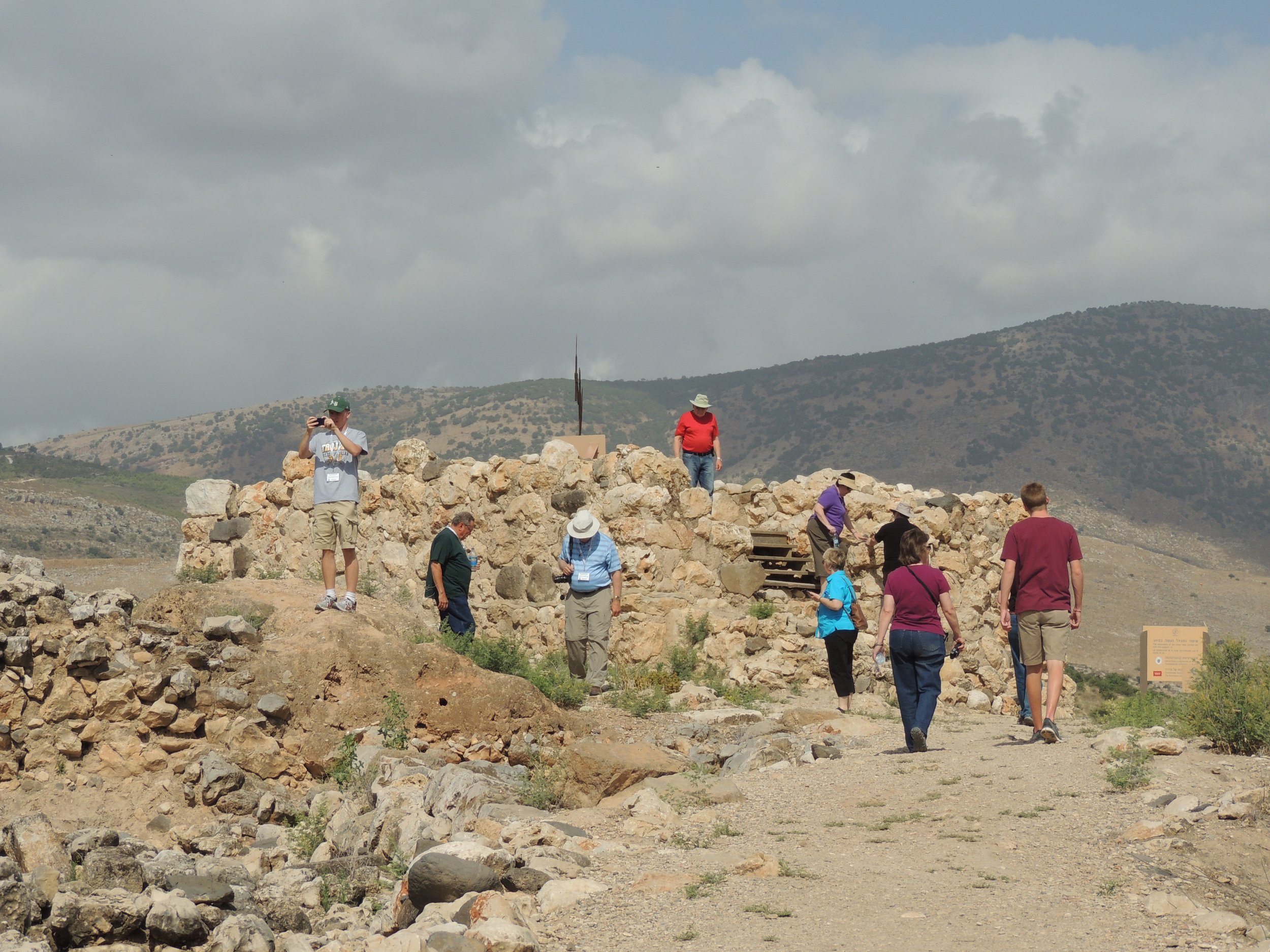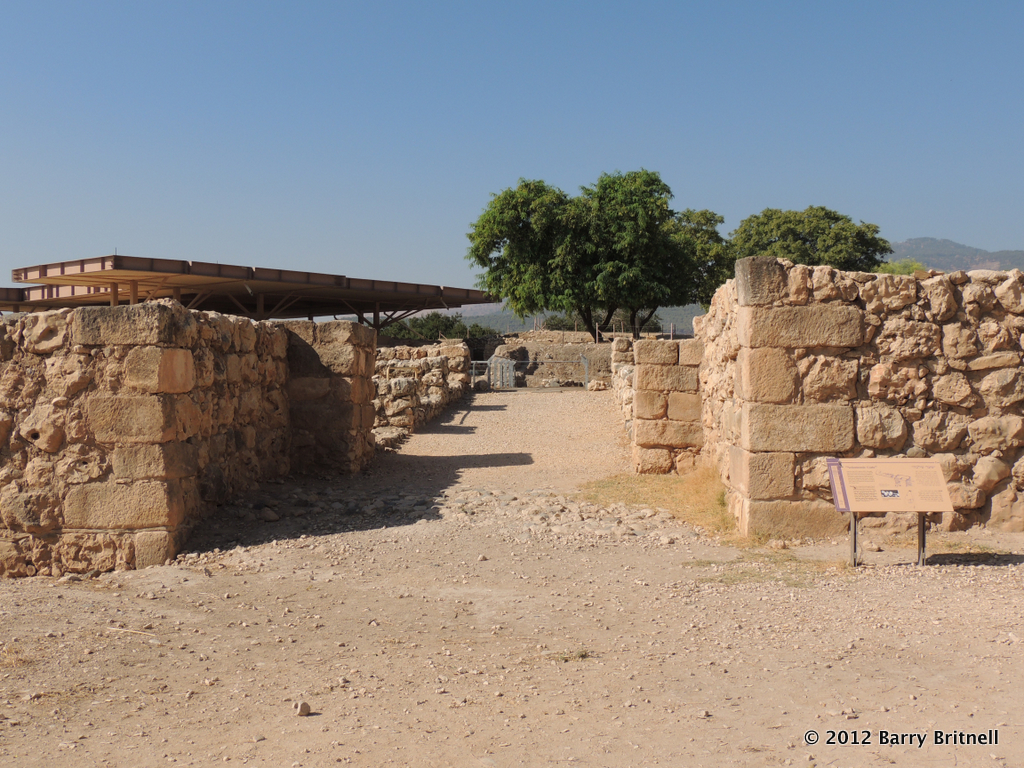As I write this post, I am sitting on the balcony of my hotel with a view of the Sea of Galilee. As a Christian, it is difficult to put into words what it means to see this beautiful location. Peter, Andrew, James and John used to fish these waters. Jesus calmed a storm that raged on these waters. Jesus walked on these waters. All of those events happened within sight of where I now sit. I am truly humbled to be here and to be sharing this experience with this group of people. We started our final day in this region by visiting the ruins of Chorazim. Jesus cursed this city for their unbelief. While there, we were entertained by a number of rock badgers that cross-crossed the paths in front of us.
We followed that visit by driving north up the Hula Valley and visited Hazor. By standing on the top of this tel, it is easy to understand the strategic importance of this location. It is no wonder why Joshua conquered this city as part of his northern conquest.
We drove by the tel of Abel Beth Maacah. While going by, we read the account from 2 Samuel of the wise woman of this city who singlehandedly saved her city.
A visit to the northern part of Israel is not complete without a visit to Tel Dan. As you walk around the high place built by King Jeroboam, you are reminded how this single decision probably condemned his nation in the years to come. We also visited the Israelite Gate and the even more ancient Canaanite Gate.
Our next stop was at Banias, known in the Bible as Caesarea Philippi. By seeing he remains of the pagan temples that was the main part of this city, it is easy to understand why Peter stated that "Jesus was the Christ, the son of the living God."
As we drove back to the Sea of Galilee, our path took us through the Golan Heights. We made one stop at an overlook where we could see the Syrian plain in the direction of Damascus. Saul walked near here when he saw his vision of the risen Jesus.
Tomorrow morning we will leave Galilee and go "up to Jerusalem". As we do so, I will think of my wife, who loves the sea, but graciously stayed home and watch the kids and allowed me to come here. I will also think of all of the memories that have been made in the past days and the more that will be made in the days to come.
Until then, Shabbat Shalom.





















